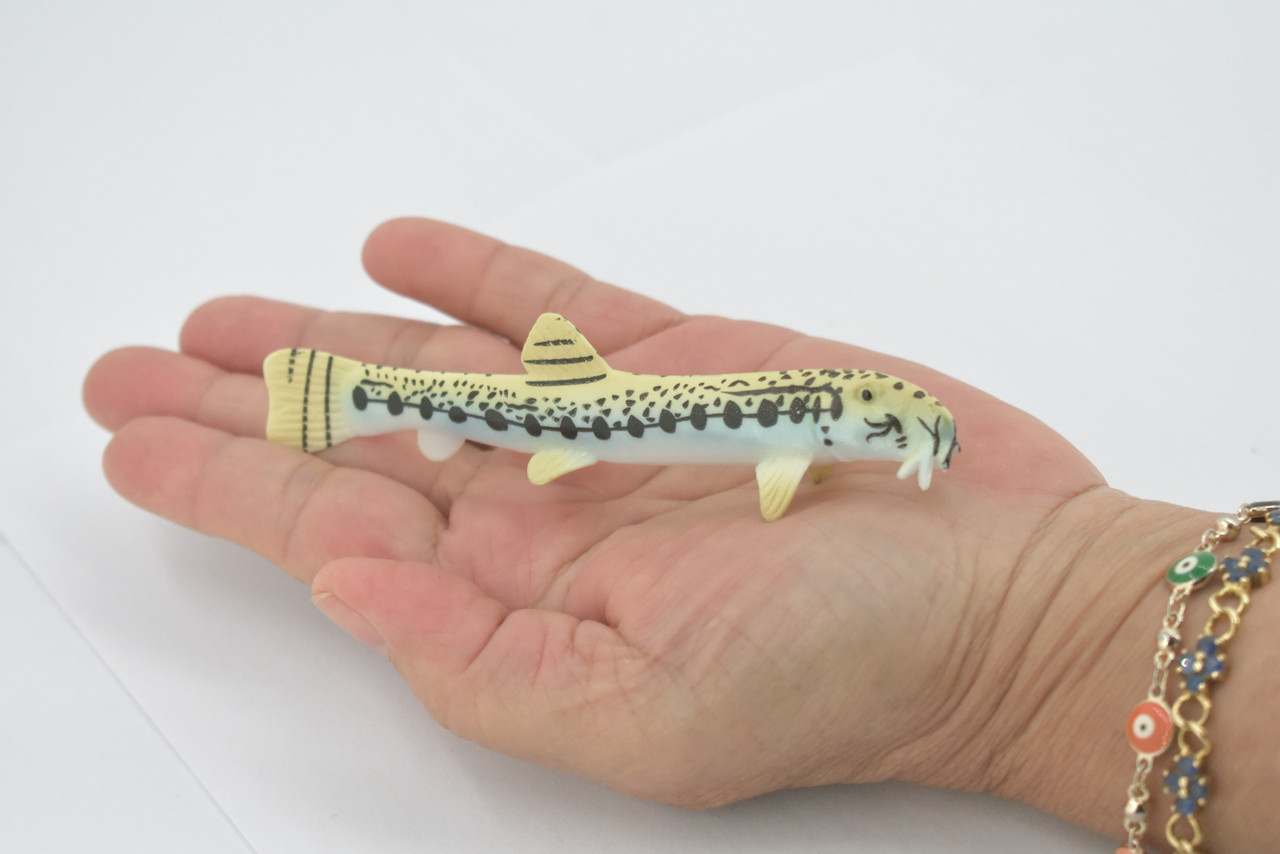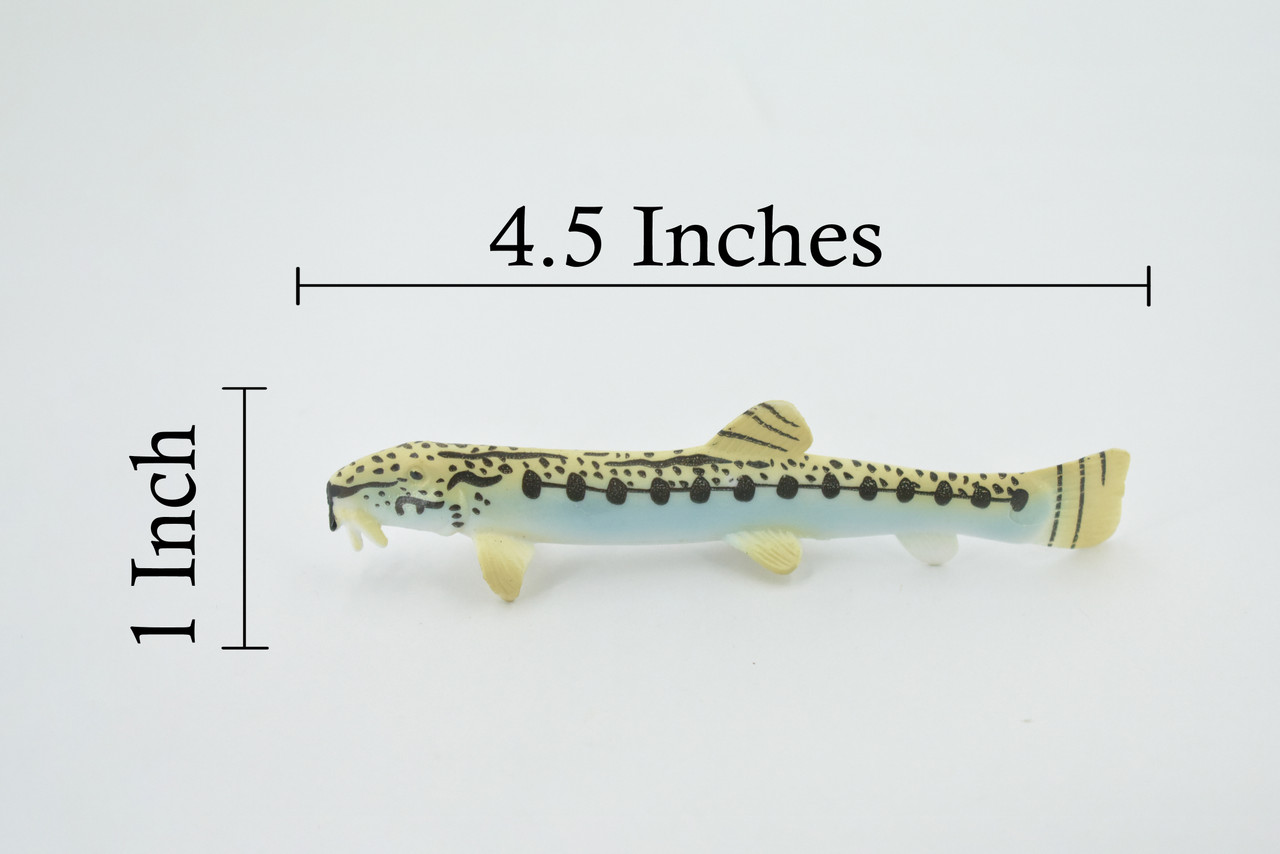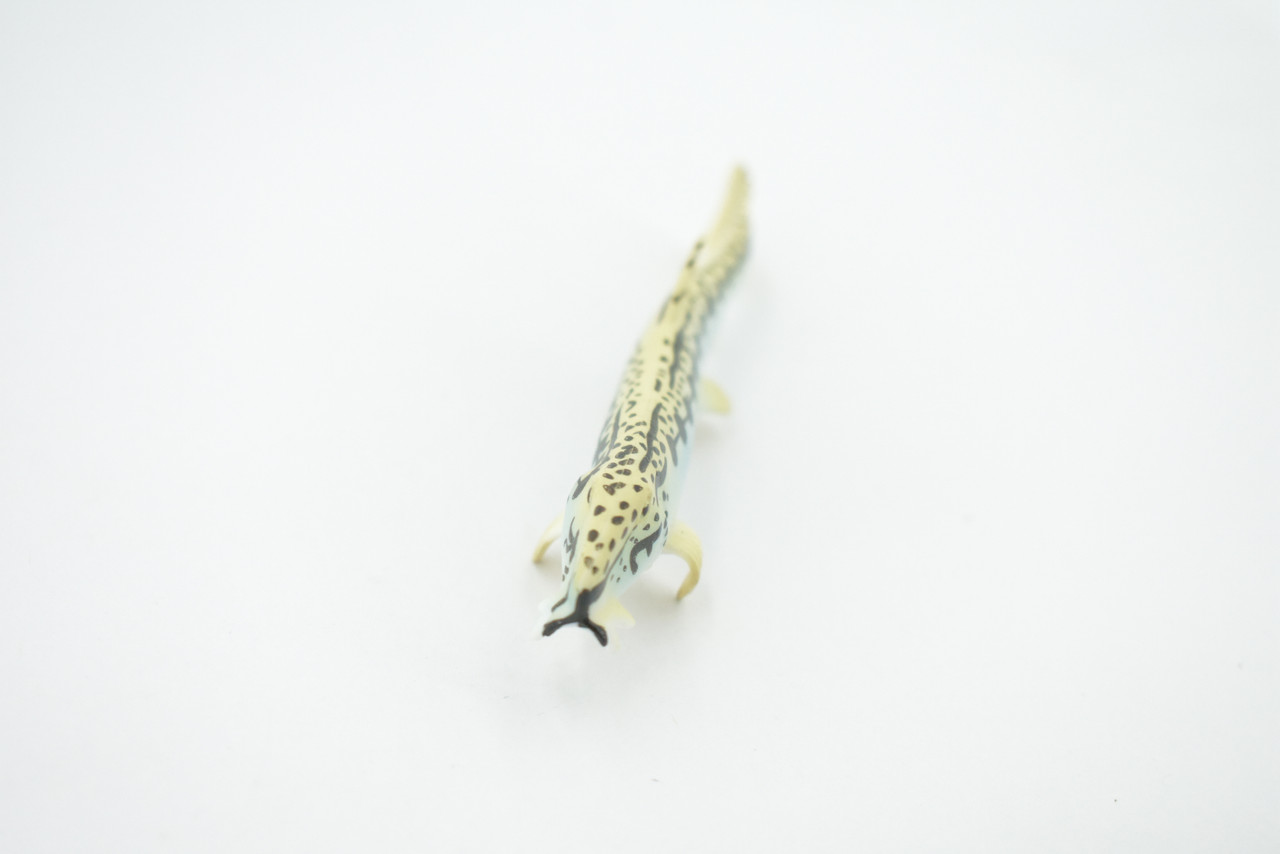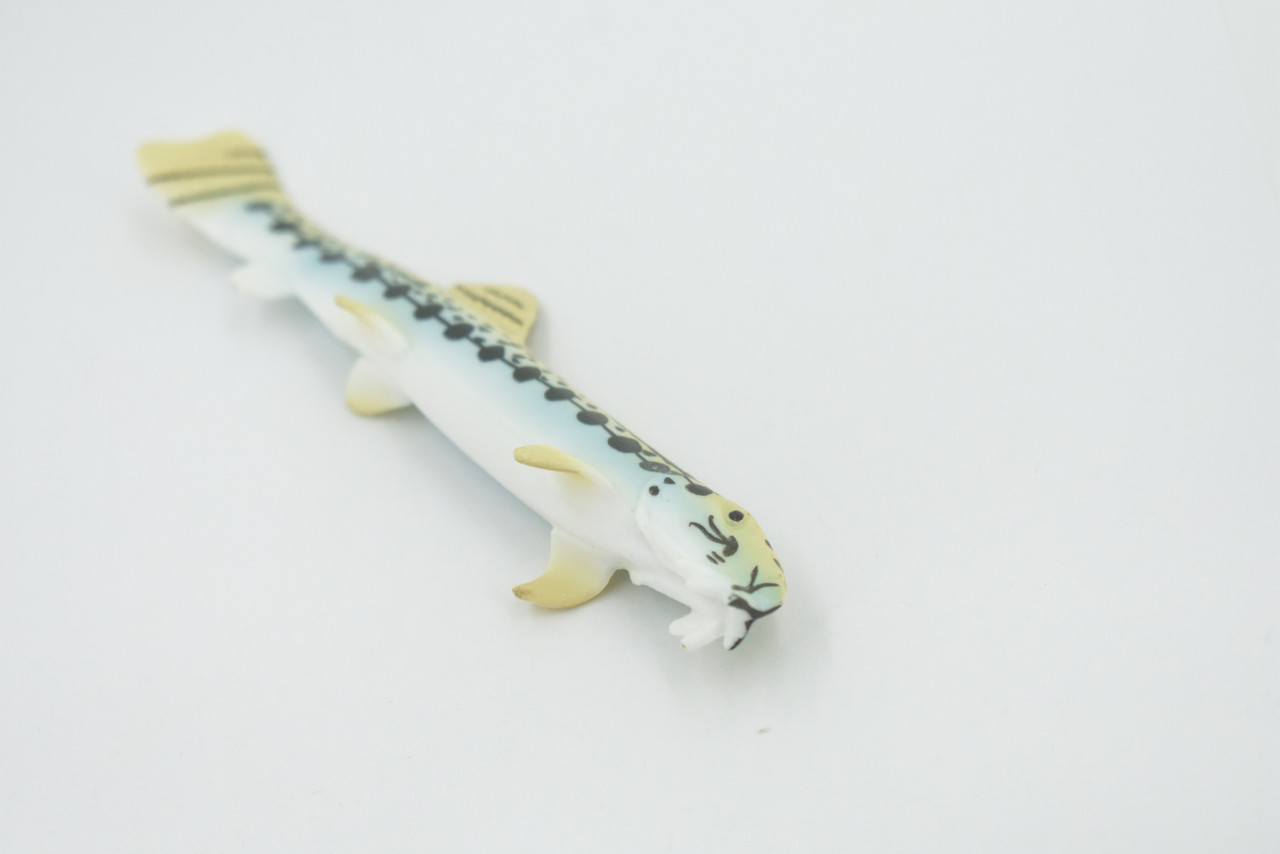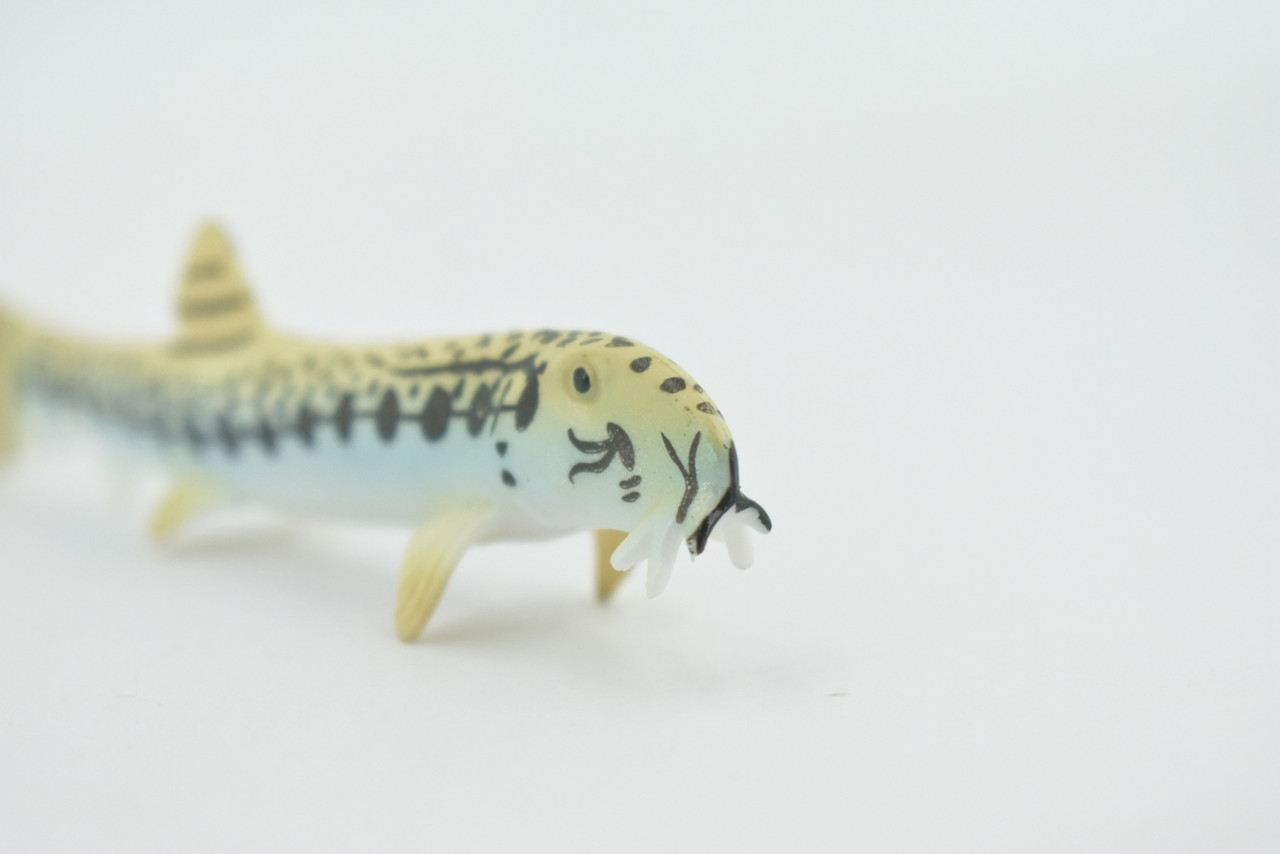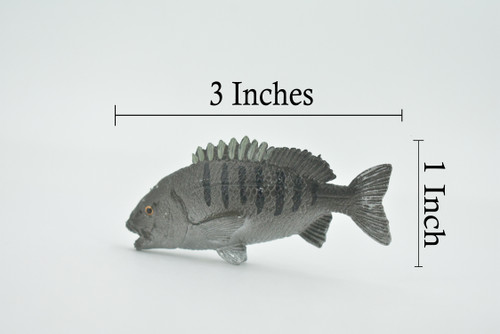Product Description
This Freshwater fish, 4 1/2" figure includes hand painted features to give it realistic details that are true to natural anatomy. This figure is considered a museum quality replica. Highest Quality Natural Rubber.
Most people, including anglers, have never heard of the spined loach, Cobitis taenia, but the fish is a rare survivor of a time when the English Channel was a river. This shy and largely nocturnal species is remarkable both for its survival skills, and what it tells us about the past. The spined loach is a separate species from the more common stone loach and only occurs in rivers and waterways in eastern England, which were once connected to the Rhine. The Great Ouse, Witham and Trent once joined the Rhine and together drained down a vast valley that is now the Channel, reaching the sea somewhere west of the Isle of Wight. The spined loach's presence in both the Rhine and these English rivers is evidence that the North Sea was once dry land and part of a single giant river basin. The fish has never spread beyond its original habitat and is absent elsewhere in Britain. It is found in Europe, North Africa and Asia and is being studied to find out whether these fragmented populations have evolved into sub-species, and what else their distribution and genetic make-up tells us about the distant past. The spined loach is an attractive heavily patterned fish, seldom more than 10cms long (4ins). It has a slender body and a two-pronged spine in a pocket at the rear of each eye. The purpose of these spines is a mystery, unless they are used in mating battles. The fish only lives three to four years, so rapid breeding is required for survival. The spined loach is described as a rare protected species under the Bern Convention and EC Directives but locally it can be very abundant. Hundreds of specimens were found in one 25-metre stretch of the river Ouse in Bedfordshire for example, but the populations tend to be isolated because of lack of suitable habitat. The spined loach thrives where there is a river or lake bottom of fine, organic rich sediment. During the day it half buries itself for protection and at night sieves the sediment, catching and eating small creatures and ejecting the sand and mud through its gills. Like all fish, the loach likes oxygen rich waters, but some slow-flowing rivers, canals, streams and ditches can be low on oxygen. The spined loach solves this problem by a special adaptation. It swims to the surface and takes a gulp of air, its gut being capable of absorbing oxygen into its bloodstream. Once the fish has removed the oxygen the depleted air is expelled as waste and the process is repeated, enabling the fish to breathe through its stomach.
Thanks for visiting Collectible Wildlife Gifts, the leading provider of high-quality, lifelike animal Designs and gifts! We work hard to ensure we have a diverse range of products. Each product is inspected for their quality craftsmanship. Whether you're searching for a great gift or seeking educational designs for displays, we’ve got you covered.
At Collectible Wildlife Gifts, our products appeal to a wide range of customers, including family, friends, and educators. Our products are trusted and used by professional organizations as well including aquariums, zoos, and movie studios.
Our extensive line of products boasts everything from plush sharks to educational animal growth cycles. Our products bring joy to recipients, and serve as valuable educational resources, sparking curiosity and fostering learning.
Discover the wonders of the natural world with Collectible Wildlife Gifts. Browse our collection today!


